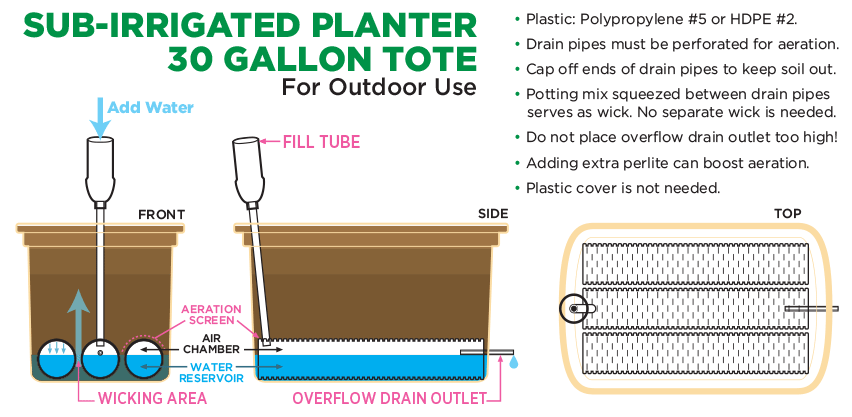Tim Fox
Well-Known Member
picture states " Potting mix squeezed between drain pipes serves as the wick"Hmm just a question, haven't read the thread all the way through. I've noticed that most of you seem to use fabric pots with some sort of soil wick dripping down into the reservoir. I was wondering why you choose that design?
I've been setting up beds similar to this(picture shamelessly stolen off the interwebs). Using a 27 gallon tough tote and 3" perforated drain pipe Coiled around the bottom and plastic over the end's. I plan on dropping an air stone down the watering pipe in the future, but so far growth has been rather explosive. Threw off my training cycle a bit lol. Anyone have thoughts on this style compared to the soil wick method?

Also, I had one other question for those of you using rice hulls. What ratio of rice hulls too your other aeration components do you recommend? I recently found out it's cheaper for me to order rice hulls online than it is to buy verm/perlite locally
plus the 1 inch air gap in the pipes,, it works the same as all the other sips,
fantastic useful design and robust long lasting too
I have seen whole outside garden beds built using this method your showing,, like 10 foot and 12 foot long beds, just cutting the drain pipe to the length of the bed
I think @Humanrob may have used the drain pipe for a wick in one of his set ups,, not sure, he has many types,, lol




